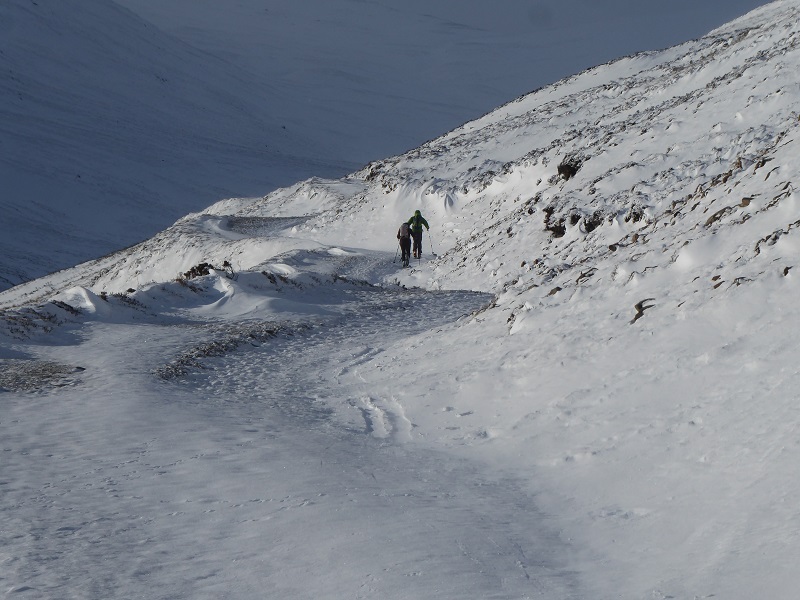
The Scottish Government’s Planning Bill and the CNPA response
In December, the Scottish Government published its Planning Bill and this is now going through Parliament and will be considered this month by the Local Government Committee. While in the Memorandum accompanying the Planning Bill the Scottish Government clearly states “The purpose of planning is to guide how land should be used to meet the needs of society” our planning system is currently focussed on where and how development should take place rather than how all land should be managed. While there are some good things in the Planning Bill currently going through the Scottish Parliament, it reflects and indeed consolidates that development bias, containing no new measures to protect the environment or determine how land in the countryside is managed.
The gaping hole in the Bill is landownership and what happens when a landowner decides to manage land which does not “meet the needs of society”. For example, while the Environment Secretary, Roseanna Cunningham has accepted there is a need to review how grouse moors are managed and set up a Review Group to do this – whose remit is ALL about land-use – there is absolutely nothing in the Planning Bill which would enable Planning Authorities to influence, let alone control, how grouse moors might be managed in future. While that presents a problem for many of our Planning Authorities, it poses specific challenges for our National Park Authority whose primary purpose relates to the management of land within their areas.
Historically, our planning system’s approach to environmental protection in the countryside has been limited to the designation of protected areas, from National Scenic Areas to Special Areas of Conservation. These offer some “protection” against certain types of development. The Planning Bill contains no new measures to strengthen or extend existing protection and indeed contains one measure which is likely to do the opposite: the proposal to replace Simplified Planning Zones with Simplified Development Zones will remove the current statutory restriction on such zones being located in National Scenic Area or Sites of Special Scientific Interest (see here for excellent SPICE briefing on the Bill).
While the John Muir Trust is thankfully campaigning for the Scottish Government to add clauses to the Bill which would increase the protection offered to wild land (see here for lobby of parliament) that appears to be it at present. There is nothing in the Planning Bill to suggest that the Scottish Government has any idea how our European designated sites could or should change with Brexit looming. This is important because the European Special Protection Areas and Special Areas of Conservation have become far more important and carry far more weight in the decisions our Planning Authorities make than our home spun designations such as Sites of Special Scientific Interest, National Scenic Area or, dare I say it, National Park.
The Planning Bill is therefore a lost opportunity when it comes to the environment including the challenges faced by our National Park Authorities, which have responsibility for development plans on the one hand and for conserving landscape and natural heritage on the other. There is nothing, for example, in the Planning Bill which would enable or help the Cairngorms National Park Authority to achieve its aspiration to enhance the environment at the landscape scale. It was disappointing therefore to read the CNPA’s draft response to the Planning Bill which was considered at its January Planning Committee (see here). Staff accepted the format of the consultation – I appreciate they are hard pressed and probably did not have much time to consider this – which avoided all the big gaps in the Bill outlined above and failed to use the opportunity to articulate and provide more evidence of the very real challenges they are facing:

No suggestion here as to how the planning system could be developed to influence land-use within the National Park “to meet the needs of society”.
While the CNPA did strongly support some of the proposals in the Bill, I am surprised given what has been going on in the National Park they do not make more of them:
 Given their experience of hill tracks for example does the CNPA really think the proposals in the Bill to strengthen enforcement are enough? Why did they not supply all the evidence they had presented to the Board at their December meeting on the need for better enforcement (see here)? In the case of the Cluny Hill track in Glen Banchor, for example (see below), do CNPA staff believe the proposed new enforcement powers would have resulted in this track having been restored by now? If yes, it would have been good to know why, but if no, surely the CNPA should have suggested what further powers they need?
Given their experience of hill tracks for example does the CNPA really think the proposals in the Bill to strengthen enforcement are enough? Why did they not supply all the evidence they had presented to the Board at their December meeting on the need for better enforcement (see here)? In the case of the Cluny Hill track in Glen Banchor, for example (see below), do CNPA staff believe the proposed new enforcement powers would have resulted in this track having been restored by now? If yes, it would have been good to know why, but if no, surely the CNPA should have suggested what further powers they need?

So, what would the CNPA need to charge to recover the costs of enforcing the proper re-instatement of the Glen Bruar hydro scheme (see below) for example? Again, like enforcement powers, we do not know whether or not CNPA staff believe the new charging flexibility would cover costs.
Its possible of course that the CNPA planning committee strengthened the response and at least the CNPA response was considered by Committee. There has been no Planning Committee meeting in the Loch Lomond and Trossachs National Park Authority and its impossible to tell if they have responded to the consultation or not.
The proposals in the CNPA’s Main Issues Report affecting land-use in the countryside – hill tracks
This narrow approach to development planning, which accepts the current ruling ethos that planning should primarily be about controlling development rather than wider land-use, is reflected in the CNPA’s Main Issues Report which is out for consultation until the beginning of March (see here) . While its positive that two out of the ten main issues identified for the new Local Development Plan are ostensibly about land-use, the section on Natura Sites is reduced to a consideration of how to protect Capercaillie ( I will come back to this in a future post). I will consider here the section on hill tracks.
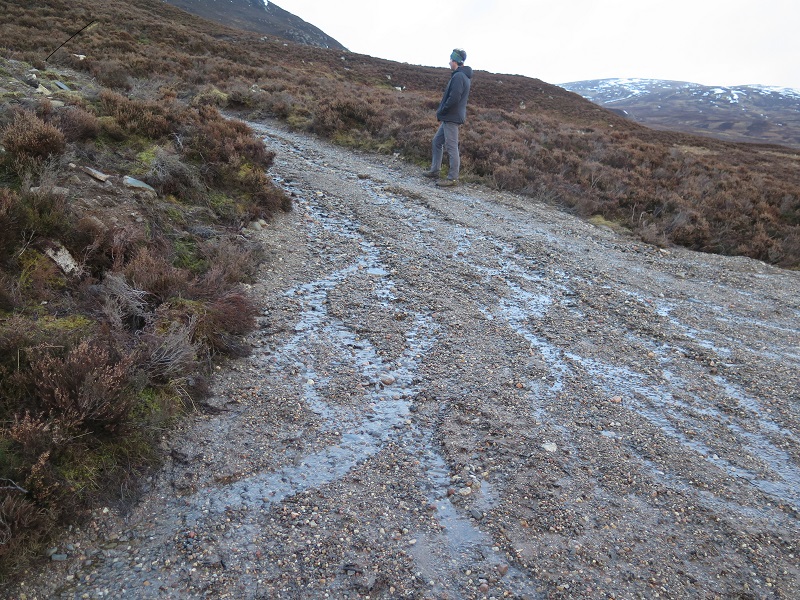
I welcomed the commitment in the CNPA’s National Park Partnership Plan published last year that there should be a presumption against new hill tracks in open moorland areas but I do not believe the discussion in the Main Issues Report goes nearly far enough.
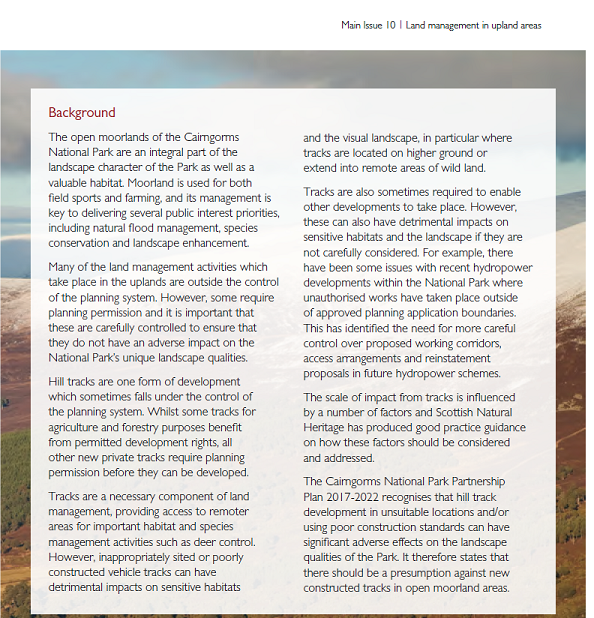
The claim that the current policy on landscape “has been used effectively to control and mitigate the impact of new hill tracks in cases where they require planning permission” is in my view not true. For example, the CNPA is taking enforcement action against the unlawful Cluny Estate track (see here) and has spent a considerable time ensuring that the Glen Bruar hydro track met planning requirements (see here) and that is without considering all the tracks which have been created for moorland management but which estates claimed were for agricultural and forestry purposes and so did not need planning permission. The analysis fails to consider the serious deficiencies in the Prior Notification system or the very real problems the CNPA faces in proving that a hill track is not for agricultural or forestry purposes.
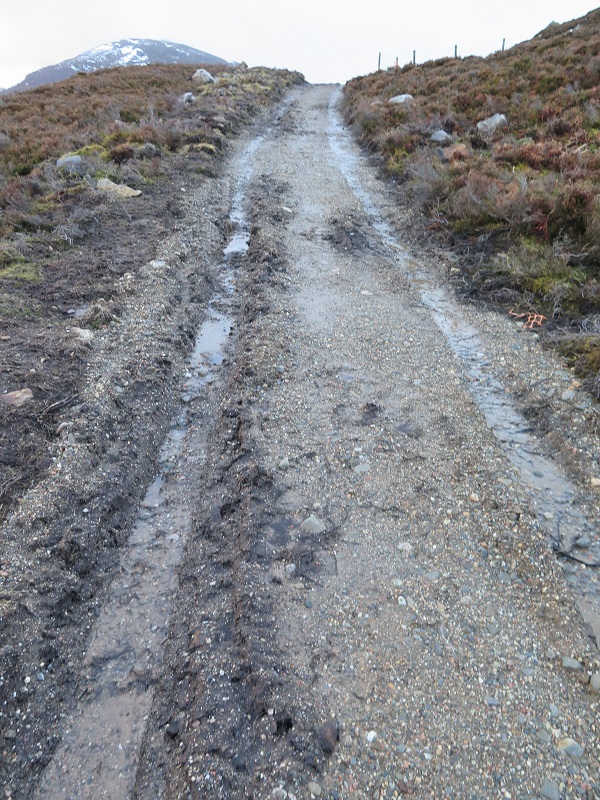
Is the hill track at Glen Banchor, for example, which goes through moorland an agricultural track because the newly constructed section leads to a pen used for sheep dog trials?
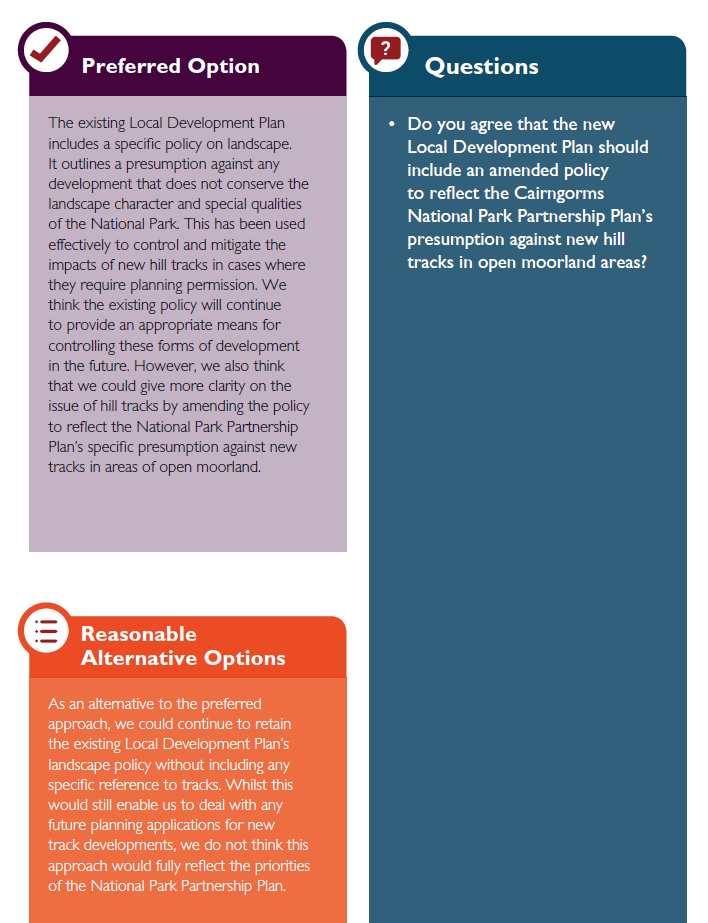
The problem is the proposed Development Plan policy strengthening, while well intentioned, is poorly worded and likely to be totally ineffective. To illustrate this consider the 10 miles of new track over moorland in Glen Feshie which the CNPA decided last year did not need planning permission and could be dealt with under the Prior Notification system because part of the purpose of the new tracks was to plant new forestry (see here). Is the CNPA now saying that such tracks, which I argued might be justified but should have been properly considered through the planning process, would not be allowed? I suspect not. So when will open moorland be treated as moorland? Will anyone who says they propose to plant a few trees or keep a few sheep as mops for the ticks which affect grouse be still able to do what they want?
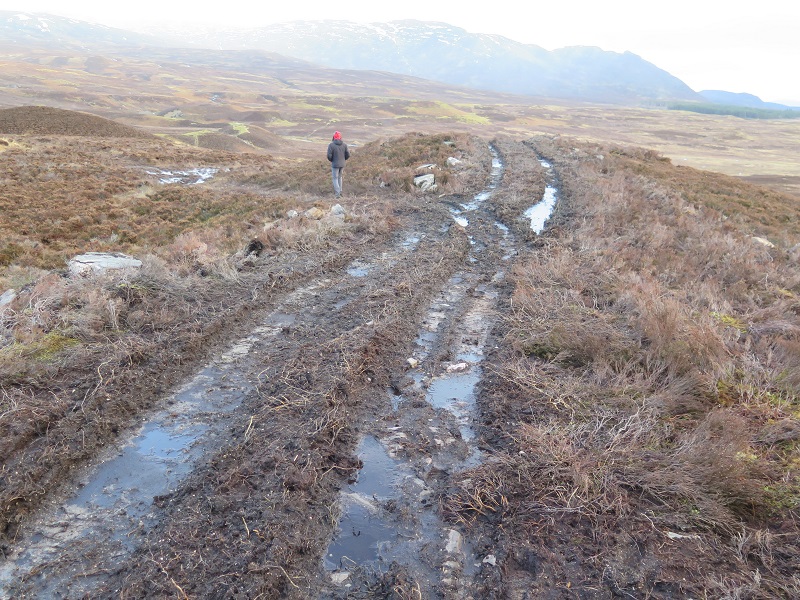
An even greater problem is that the policy says nothing about use of vehicles off road which eventually becomes so bad that it is used to justify the creation of new tracks. You cannot deal with track issues without considering how vehicles are then used when they come to the end of tracks.
And the Main Issues Report says nothing at all about how the CNPA might strengthen requirements about how tracks are designed, whether these be new tracks or upgrades of existing ones.
What needs to happen
While I welcome the desire of the CNPA to stop the proliferation of hill tracks, if they are to be successful in this, they need to develop and extend their proposal that there should be a presumption against new tracks in open moorland areas. For example, the CNPA could:
- Use planning powers to ensure that where tracks are consented in other areas, conditions are attached preventing vehicles using such tracks to access open country
- Develop guidance, in partnership with recreational organisations and conservation minded landowners, on the off-track use of vehicles and consider the development of byelaws in future to control such use of vehicles
- Set obligatory minimum standards for tracks and where tracks did not meet these standards no “upgrades” would be allowed. For example, SNH recommends a maximum angle of 14% for hill tracks because any more than this the track erodes. The CNPA should no longer tolerate poorly constructed tracks.
I also believe that the CNPA needs to consult on and articulate clear criteria about when they would be prepared to consider tracks in moorland areas, for example to enable forest restoration, otherwise they will risk undermining their new policy proposal before its even adopted. I will explain why in a further post on Glen Feshie.
The even bigger issue here appears to be what will happen ) after Brexit to our laws that implement the EC Habitats Directive (that covers European Special Protection Areas and Special Areas of Conservation). There seems to be strong opposition from landowners/many Tory MPs to bringing that legislation across – but that doesn’t mean it wont. Unless you’re keen on a hard brexit (and personally I’ve yet to read any factual evidence for why that wouldn’t be a big disaster for more than just the environment) then we should all be supporting continuation of the EC Habitats Directive.